Huawei made a splash in this year’s Mobile World Congress when it announced their newest flagship handsets, the Huawei P10 and the P10 Plus.
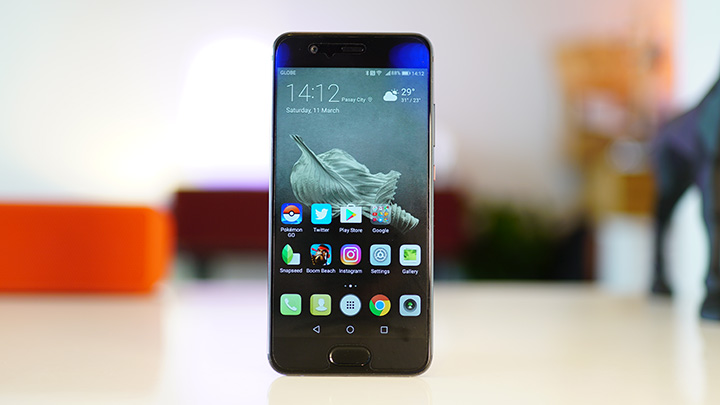
As a successor to P9, the Huawei P10 introduced a few more improvements both in the design aspect as well as in the hardware department.
Table of Contents
The Huawei P10 didn’t veer away much from the design signature of its predecessor, the P9. You get the same all-metal body in a slim profile and a form factor that’s comfortable on a single-handed use.

The power button and volume controls are found on the right side. The same chamfered edges around the buttons and that classic red trimming of the power button that’s closely associated with Leica was inherited from the Huawei P9, an evidence to the attention to detail that Huawei put on the device.
The SIM card slot is on the left side which supports dual SIM with the second one doubling as a tray for the microSD card. This hybrid dual-SIM was re-introduced with the Mate 9 so we’re not that surprised that the P10 also got the same. Both SIM slots support 4G LTE with carrier aggregation features.
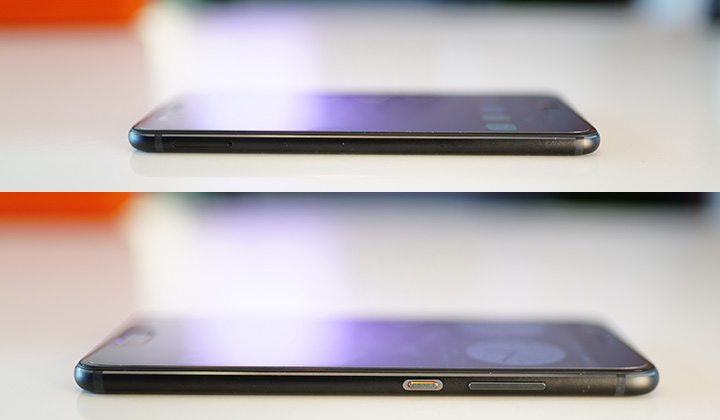
The 3.5mm audio port is at the bottom end together with the USB Type-C port and the speaker grills. There’s nothing up top except for the noise canceling microphone. The P10 does not have an IR blaster, a feature exclusive only to the P10 Plus.
At the upper section is the strip of glass that houses the two rear cameras with the dual-LED flash. It uses the same optics as the one in the Mate 9 with an f/2.2 aperture Summarit lenses.

That matte finish at the back is a smudge-magnet.
Some of the design features were obviously inspired from the iPhone 7, including a couple of color choices like the graphite black, but the introduction of really cool colors like dazzling blue and greenery makes for a very enticing proposition.
The body is barely 7mm thin and weighs about 145 grams. The slender profile really makes it easier to hold with one hand, a bit slippery at times due to the finish but you still get a fairly good grip.
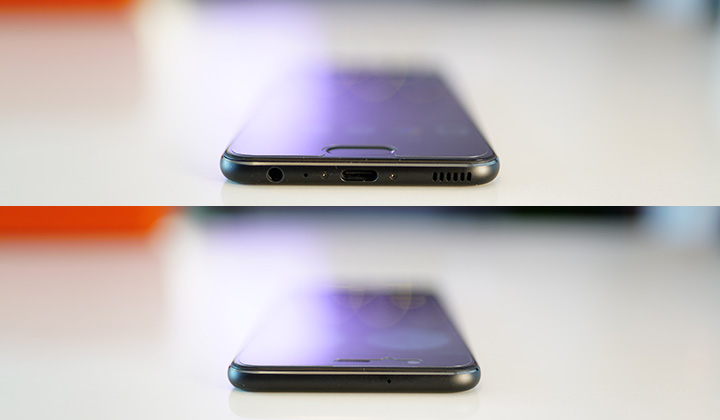
It was a bit odd for Huawei when they decided to put the fingerprint scanner in the front instead of the back where it was usually placed. Huawei has always stressed that putting the fingerprint scanner at the back is more ergonomic and makes more sense so this move in the P10 seems a bit out of character. And coming from the Mate 9 with the scanner at the back, it can get confusing.

Over-all, it’s a well-polished device, looks beautiful with a very solid build. It’s the best-looking smartphone Huawei has ever made.
The Huawei P10 comes in a 5.1-inch IPS-Neo LCD display with full HD 1080 resolution. This puts the pixel density at a nice 431ppi. Compared to the P9, the P10 has a slightly smaller screen by 0.1-inch.
Manufactured by JDI, IPS-NEO is better than conventional IPS panels since the display remains to have good contrast and color reproduction at all viewing angles. This is the same IPS panel Huawei has been using since the Mate 8 and P9.
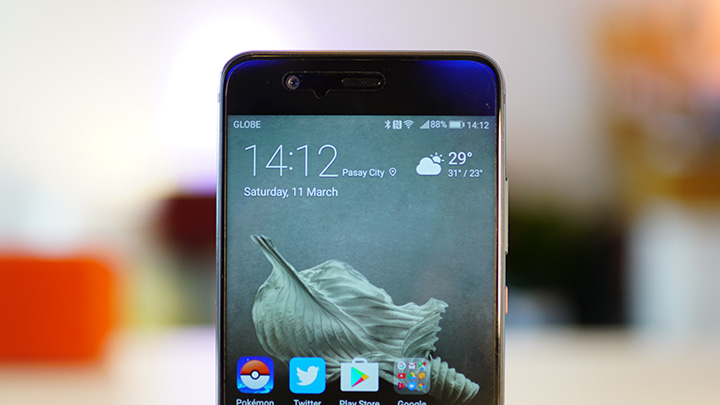
It’s got a 71.2% screen-to-body ratio, lower than the 72.9% of the P9 due to the placement of the fingerprint scanner in front from the back.
The display is bright and crisp, colors are vivid but not over-saturated and the screen is pleasantly viewable even in the outdoors under direct sunlight.
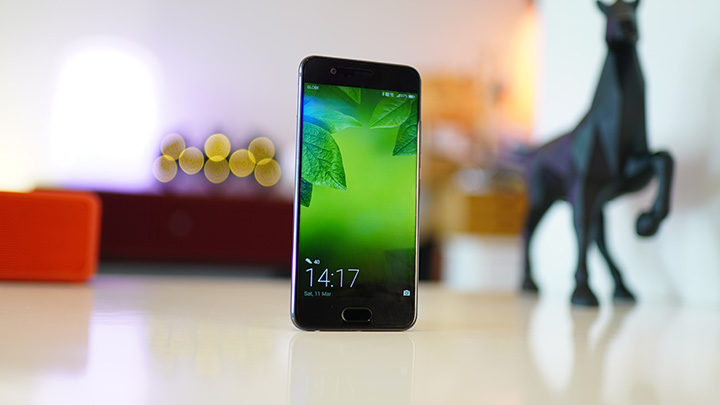
The entire front panel is covered in glass, protected by Gorilla Glass 5, with the edges slightly curved (marketed as 2.5D) toward the sides. The fingerprint sensor at the bottom corner is also covered by the glass so there’s really no physical button there except for the scanner, just like in the iPhone 7 and the HTC 10.
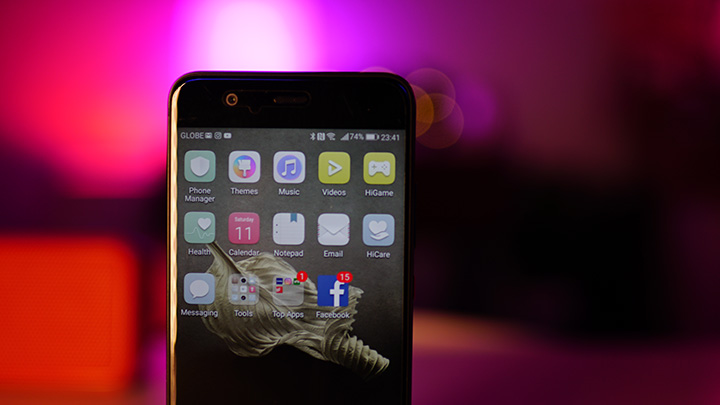
Huawei has been very conservative with their smartphone’s display for the longest time and this is evident with the P series. While all other flagship smartphones have been moving to QHD or 4K resolutions, the P10 is still stuck with 1080p. Based on our interview with Huawei executives during the launch at MWC, this has got to do with the cost of materials and their pricing which is understandable.
The P10 has a single speaker at the bottom, just on the left side of the USB port. Sound quality is good and maximum volume is pretty loud.
The P10 runs on Google Android 7.0 Nougat with EMUI 5.1 interface that’s customized by Huawei. It’s a flat UI with multiple home screens and folder-based grouping of apps but there’s an option in the settings to enable the app drawer for those who prefer it. It’s actually one of the criticisms against the previous iterations of Emotion UI so Huawei addressed and added that option starting with the Mate 9.

By default, the normal on-screen navigational buttons are present. However, you can active the off-Screen Navigation button that allows the fingerprint scanner to double as navigational button (thereby removing the on-screen menu) — a short press acts like a Back button, a long press takes you back to the Home screen, and swipe left to open Recent Tasks. It’s a bit confusing at first but you’ll get used to it after some time.
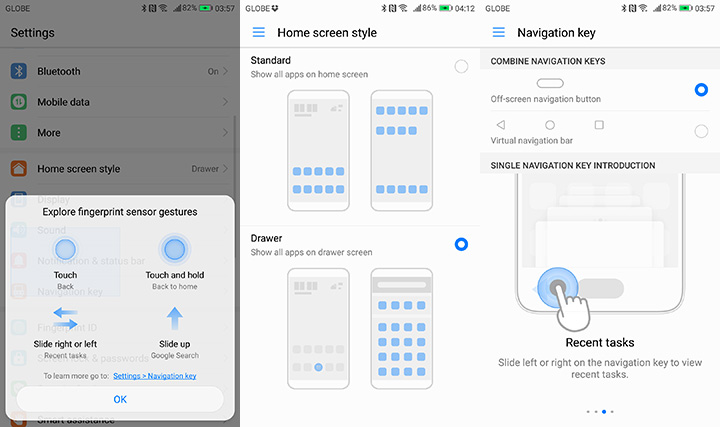
Huawei also included a few native apps like HiCare (for device warranty and support), Health (health monitoring), Phone Manager (device optimization), HiGames (free Huawei-made games). There are also some pre-installed Android apps (bloatware) like TripAdvisor, Todoist and Booking.com.

The Theme Manager is a repository of community-contributed custom themes for the phone that you can download for free. This gives you the ability to change the normal look and feel of the UI if you get bored of it.
Huawei is putting a lot of its effort and attention to the camera of the P10. The dual camera setup with monochrome and RGB sensors is unique in the industry and the partnership with Leica has elevated Huawei’s profile in this regard.

The 20MP monochrome sensor and the 12MP RGB sensor captures the image and combines them to create a single photo that’s very crisp and vibrant.

The camera app controls are simple and easy to use. There’s a tons of picture modes to choose from, including the Wide Aperture mode that allows you to take a photo and adjust the aperture from f/0.95 all the way to f/16 afterwards. This is what you use to create those creamy bokeh effects behind your subject.
You can check out the sample photos below:
As expected, the shots are impressive — images are clear and crisp, colors are vibrant and even the smallest details are captured. However, low-light photos don’t get as much detail due to the f/2.2 aperture. Thankfully, the 8-megapixel front-facing camera did better at f/1.9 aperture.
The P10 is also finally able to record 4K video, just like with the Mate 9, thanks to the Kirin 960 chip. Here’s a sample video we took:
The Manual or Pro Mode of the P10 is one of its best camera features. It allows you to take long exposure shots like this:
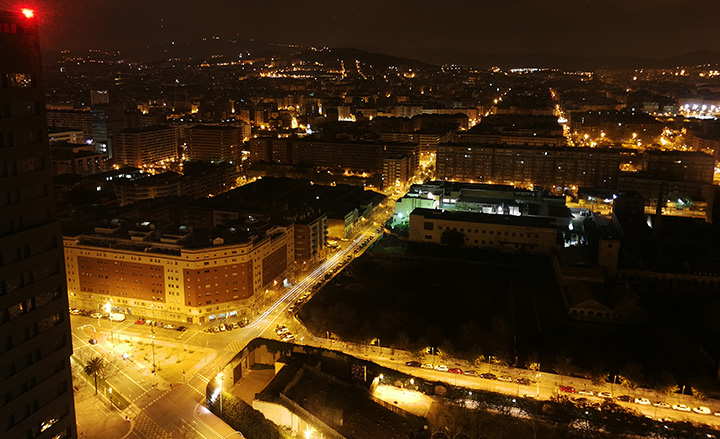
Also, unique to the Huawei P and Mate series is the monochrome mode that allows you to take raw black and white photos care of the large 20-megapixel monochrome sensor. It’s different from the usual photos where it’s processed after the shot is taken since the monochrome sensor is able to capture more detail and information about the image.

This means taking monochrome shots will get you better results in terms of detail. (Note: Xiaomi copied this monochrome+rgb camera setup in the Mi 5S Plus)
The dual-tone, dual-LED flash beside the camera provides additional lighting when needed. The dual-tone makes sure that the light color is properly adjusted based on the white balance of the environment.
Just like the Mate 9, the Huawei P10 is powered by the latest HiSilicon Kirin 960 chip. This is the first mobile SoC to use an ARM Cortex A73 processor which is a high performance application processor and about 30% more powerful than the A72.
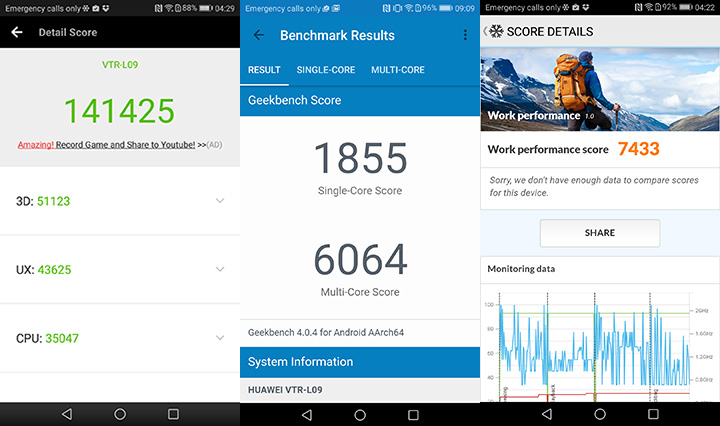
The chip is paired with an i6 co-processor and Mali-G71 MP8 graphics. The i6 co-processor is a low-power that can handle lighter tasks such as GPS navigation and always-on display functions which can result to optimized power consumption. The Mali-G71 GPU is built on a 16nm manufacturing process and features 8 cores instead of the old 4 from the T880 MP4.
The P10 scored very well in all of our synthetic benchmark tests with 141,425 points in Antutu, statistically tied with the Mate 9.
Antutu Benchmark: 141,425
Vellamo: 5,588 (Browser), 2,728 (Metal), 4,509 (Multi-core)
PCMark: 6,401 (Work 2.0), 7,433 (Work 1.0)
3DMark: 1,682 (Slingshot Extreme)
GeekBench 4.0: 1,855 (Single Core), 6,064 (Multi-core)
The Kirin 960 chip, paired with a generous 4GB of RAM, plowed thru all of the tasks and apps we ran on it. Games performed very well, all the way up to the highest settings.
The P10 is fairly complete in the connectivity department. There’s Low-Energy Bluetooth, very fast 2×2 MiMo WiFi, NFC and dual-LTE support. Call quality is superb, voice is loud and crisp and all the wireless signal have very good reception.

Huawei’s Kirin 960 chip also supports 20 different LTE bands which makes it more likely compatible with the LTE networks in many countries.
The P10 packs a 3,200mAh internal battery which is pretty good for its size (a similarly-sized Galaxy S7 is 3,000mAh and the Galaxy S6 was only 2,600).
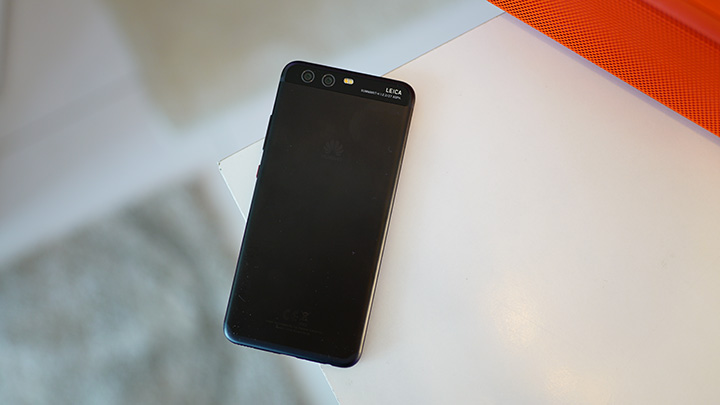
In our synthetic battery benchmark, the P10 got 9 hours and 15 minutes using PCMark Battery Test at 50% brightness and 0% volume in airplane mode. This is just the same battery life as the P9 despite the bigger battery capacity.
Using our standard video loop test, the P10 got 14 hours and 30 minutes of movie playback which is a huge improvement over the P9. In over a week of use, we observed that the P10 can last well over a day of moderate to heavy use.
Huawei included a SuperCharge technology on the P10 which is similar to Qualcomm’s Quick Charge 3.0. Charging time takes about 75 minutes (1 hour, 15 minutes) from zero to 100%.
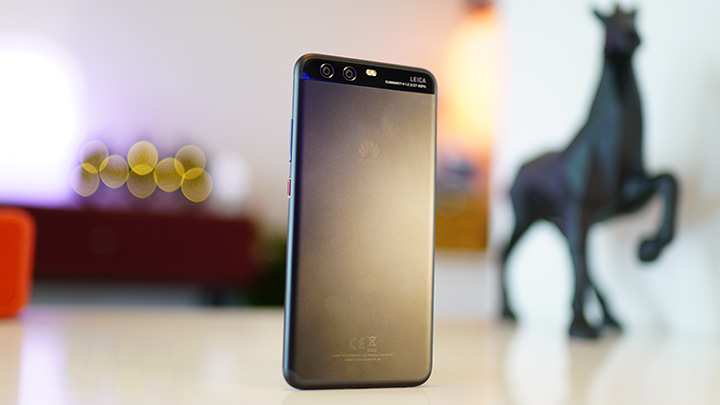
What’s missing on the P10 is wireless charging. According to the Huawei executive we asked about this feature, smartphone users are not really using wireless charging a lot based on their study. This means we won’t be seeing wireless charging on any Huawei phones in the near future. Unless wireless charging will be as fast as wired charging, we kind of agree to that observation.
The P10 has all the essential features of a great flagship smartphone — beautiful design, impressive performance, really good camera and improved battery life. We also applaud taking the risk in introducing a variety of unusual colors such as dazzling blue and greenry. Huawei has done a great job in making the P10 a very desirable device.
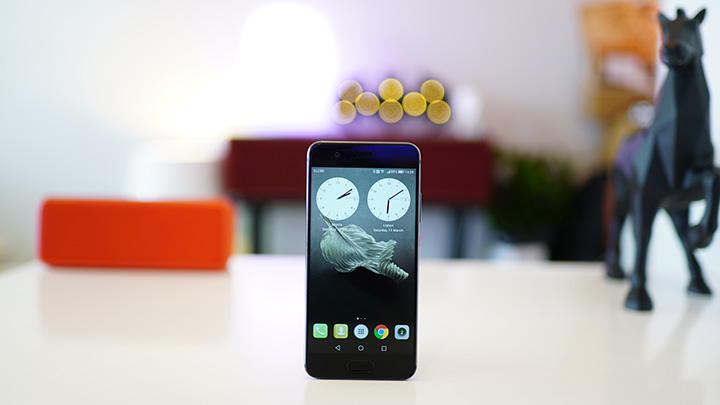
The improvements over its predecessor are significant and well thought out. The absence of wireless charging and water-resistance isn’t a deal-breaker but would have been a nice addition. These features would only add to the final cost of the device so it’s a reasonable trade-off.
Let’s just hope that when Huawei releases the P10 here in the Philippines, it will still be as affordable as its predecessor (in the Php24k range).
Huawei P10 specs:
5.1-inch full HD display @ 1920×1080 pixels, 431ppi
Gorilla Glass 5
HiSilicon Kirin 960 2.4GHz octa-core processor
4 x ARM Cortex-A73 2.4GHz + 4 x Cortex-A53 1.8GHz
Mali-G71MP8 GPU
4GB LPDDR4 RAM
32GB, 64GB internal storage
expandable to 256GB via microSD card (hybrid — uses SIM2 slot)
Dual-SIM, Dual Standby
4G LTE
20MP monochrome + 12MP color f/2.2 dual rear cameras with dual-LED Flash, OIS
8MP f/1.9 front camera
WiFi 802.11ac (2×2 MiMo)
Bluetooth 4.2 LE
GPS (Huawei Geo Technology), GLONASS, BDS, GALILEO
NFC
Fingerprint Scanner
Android Nougat with EMUI 5.1
3,200mAh Li-Ion battery with Super Charge
145.3 x 69.3 x 7mm (dimensions)
145 grams (weight)
The Huawei P10 will be available in Ceramic White, Dazzling Blue, Dazzling Gold, Prestige Gold, Graphite Black, Mystic Silver, Rose Gold, and Greenery colors. It’s initially priced at €649 (roughly Php34,400USD 586INR 49,694EUR 558CNY 4,269 when converted though the local price will be much lower and in the vicinity of Php24k) and is launching in the Philippines this March or early April.
What we liked about it:
* Solid build quality and very nice design
* Impressive performance
* Great camera quality
* Fast charging
* Very good battery life
* Wide range of color options
What we did not like:
* No wireless charging
* No water resistance

YugaTech.com is the largest and longest-running technology site in the Philippines. Originally established in October 2002, the site was transformed into a full-fledged technology platform in 2005.
How to transfer, withdraw money from PayPal to GCash
Prices of Starlink satellite in the Philippines
Install Google GBox to Huawei smartphones
Pag-IBIG MP2 online application
How to check PhilHealth contributions online
How to find your SIM card serial number
Globe, PLDT, Converge, Sky: Unli fiber internet plans compared
10 biggest games in the Google Play Store
LTO periodic medical exam for 10-year licenses
Netflix codes to unlock hidden TV shows, movies
Apple, Asus, Cherry Mobile, Huawei, LG, Nokia, Oppo, Samsung, Sony, Vivo, Xiaomi, Lenovo, Infinix Mobile, Pocophone, Honor, iPhone, OnePlus, Tecno, Realme, HTC, Gionee, Kata, IQ00, Redmi, Razer, CloudFone, Motorola, Panasonic, TCL, Wiko
Best Android smartphones between PHP 20,000 - 25,000
Smartphones under PHP 10,000 in the Philippines
Smartphones under PHP 12K Philippines
Best smartphones for kids under PHP 7,000
Smartphones under PHP 15,000 in the Philippines
Best Android smartphones between PHP 15,000 - 20,000
Smartphones under PHP 20,000 in the Philippines
Most affordable 5G phones in the Philippines under PHP 20K
5G smartphones in the Philippines under PHP 16K
Smartphone pricelist Philippines 2024
Smartphone pricelist Philippines 2023
Smartphone pricelist Philippines 2022
Smartphone pricelist Philippines 2021
Smartphone pricelist Philippines 2020
Rottie says:
Hi sir! Thanks for taking the time to review! One question, did you encounter any issues with standby battery drain? I’ve read some reviews that had severe drain with their units when left overnight.
Thanks again!
PS. Will you be reviewing the P10 Plus?
Abe Olandres says:
No issues on standby drain but that could be a firmware issue that can be easily patched.
Will do another review of the P10 Plus once it arrives.
trapik says:
Too bad, it is not water/dust proof.
Camera this good on a phone as reviewed should be protected from water/dust. How can you become adventurous if you cannot take your camphone with you all the time.
Haaaaays
dickenson manuel says:
standby battery drain??? serious problem that should be fix properly….
hunyosilaw says:
why is the specs different from the one mentioned during the Huawei Mobile Keynote at MWC 2017?
Abe Olandres says:
Depends on the region
hunyosilaw says:
You also mentioned that it’s not water resistant however, I’m pretty much sure that the CEO mentioned that it’s water resistant.. – Huawei Mobile Keynote at MWC 2017 Replay | 26:32 on youtube
Abe Olandres says:
Not IP68 water-resistant.
Anjdroid says:
Hello yugatech my p10 only gets 117000 in antutu why is yours at 144000? Got min from globe
Abe Olandres says:
Fresh reboot and device should be room temperature or lower during testing.
Pia says:
What would you suggest in general- Huawei P10, Samsung A7 2017 or Samsung J7 Pro. regardless of screen size? Please help.
Pia Wurztbach says:
huawei p10
oto keh says:
got a problem with the rear camera RGB sensor auto focus it’s only clear within few inches beyond that is blurry. monochrome and front camera are ok. i think a lot of users have the same prob. read some forums online, some tried to knockon the camera or tap the phone etc. i gave it a try then it worked. i was so happy but i guess it was just temporary since the issue went back after an hour when i opened the cam.????? so i guess i need to send this to a huawei shop.
Rey says:
I’m choosing my retention over this weekend and I’m trying to choose between some smartphones including P10. The choices are the Nova 2i, J7 Pro, Oppo F5 4gb, Iphone 6 + cashout, and P10 + cashout. What can you suggest that I choose?
Mark Magdato says:
I just want to ask kung may P10 pa po ba sa store ng Huawei or wala na po? Ang sabi po kasi sa ibang mall is phase out na daw po yung P10 eh.
thank you for the respond.
Genevieve says:
P10 camera…gives me a headache. It suddenly blurred. I tried resetting it to default still the same. I tried to use updates.. still no cure.. so disappointed. Waste of money…